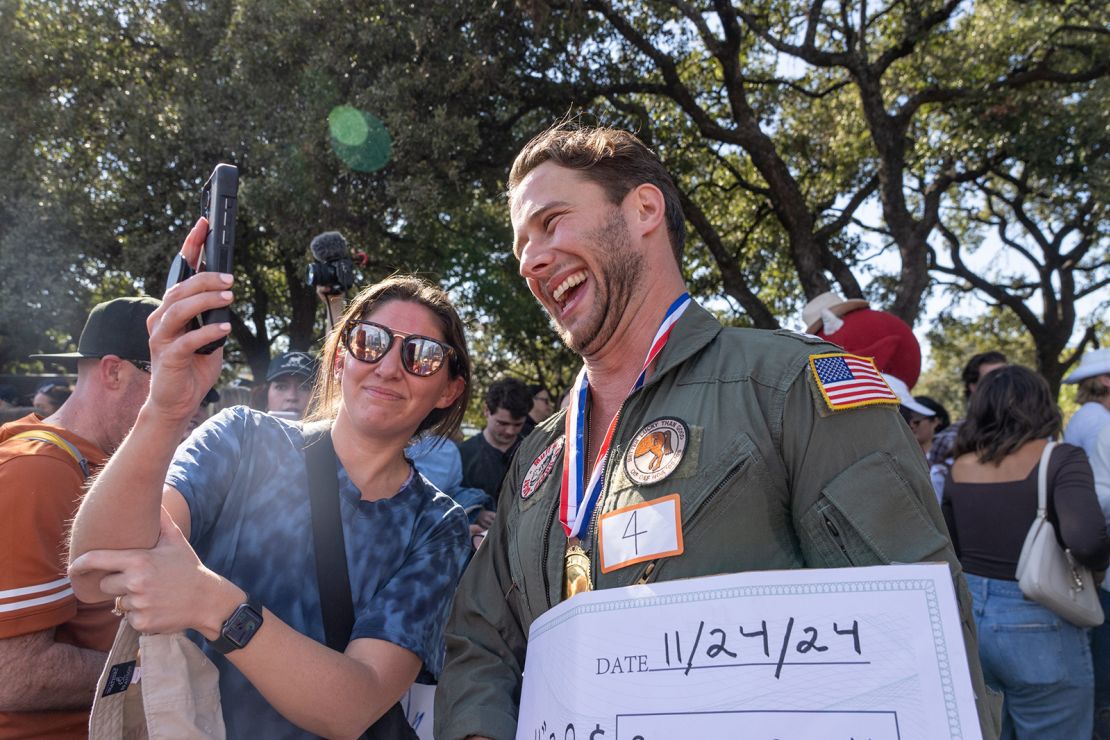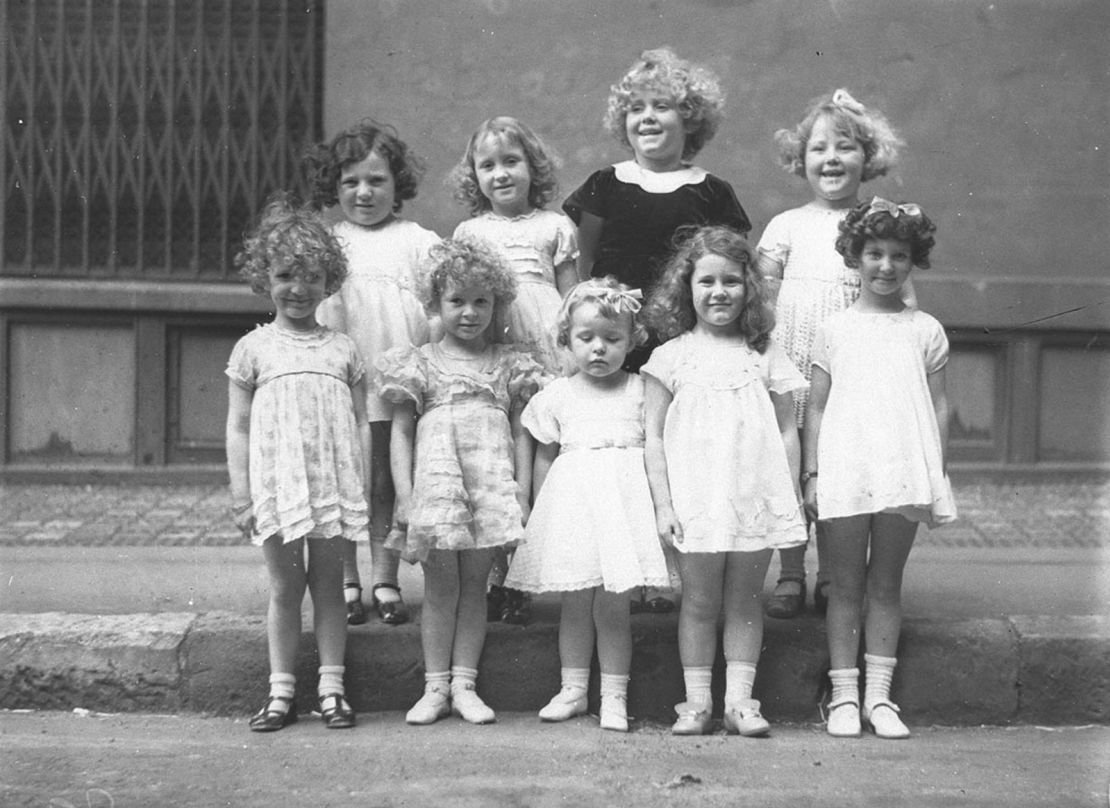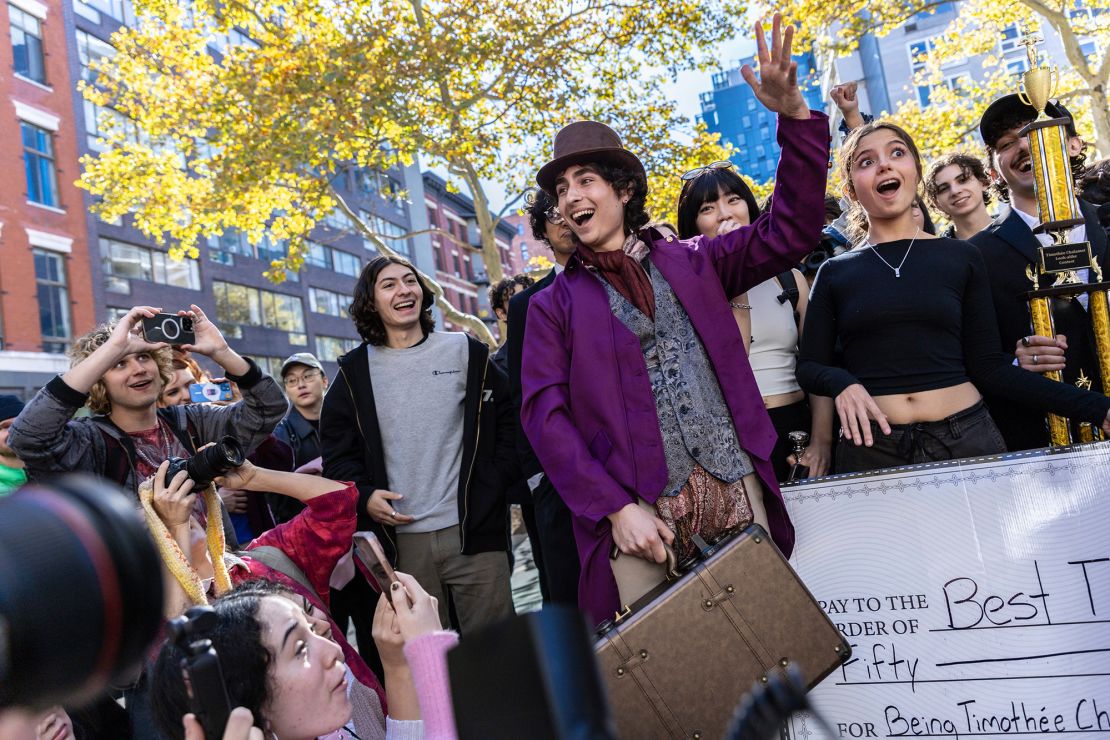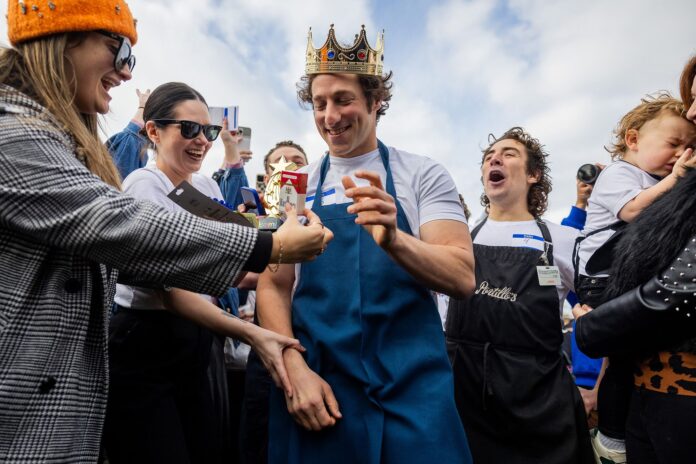In German folklore, doppelgängers are considered to be a bad omen whose presence brings about misfortune. It feels all the more fitting then, that amid todayâs geopolitical conflicts, increasing climate catastrophes and economic uncertainties, weâre seemingly hooked on celebrity lookalike contests.
After that, things moved quickly. In Ireland, mulleted men compared thighs in 5-inch Gaelic Athletic Association shorts, hoping to have their likeness to Paul Mescal verified by a jumbo cheque for â¬20 ($21) (a second contest took place at a pub in London, apparently making Mescal the first actor to inspire two competitions).
Days later, more young men, this time dressed in pussy-bow blouses and three-strand pearls, piled into Londonâs Soho Square looking to be crowned the best Harry Styles lookalike. Then there was the search for actor Dev Patelâs doppelgänger in San Francisco, and singer Zayn Malikâs in New York. And not since the taping of a âTop Chefâ episode has so many apron-wearing men gathered in one place for the Jeremy Allen White competition in Chicago earlier this month. There were cigarettes, farmerâs market flowers and yards of fake tattoos â all in reference to paparazzi shots of White as well as his character Carmy Berzatto in âThe Bear.â Just this past week, Zendaya â because who else? â became what appears to be the first female celebrity to have her own viral lookalike contest in Oakland, California while one for actor Glen Powell was held over the weekend in Austin, Texas.
Thanks to social media a new competition poster seems to go viral each week, with many awarding a small cash prize and an item associated with the celebrity or celebrityâs character (Whiteâs lookalike took home a pack of Marlboro Reds, while the organizers of Zendayaâs contest threw in a bottle of shampoo and conditioner of a brand that the actor reportedly uses). Like a dog whistle for a particular type of online Gen Z or Millennial, these contests spread like wildfire. But the idea of a lookalike contest is in fact a time-honored form of entertainment.

In his memoir, Charlie Chaplin Jr. wrote that his famous father had not only entered but came third in his own lookalike competition â held at Graumanâs Chinese Theater in Hollywood sometime between 1915 and 1921. (Dolly Parton said she also participated in one held of her, at a gay bar in Santa Monica decades later. She lost). There were Shirley Temple contests in the 1930s â including one in Sydney, Australia in 1934 and one in 1935 at the Cleveland Food Show, where more than 900 children entered. The event was so popular, the Cleveland organizers reportedly staged three more â one for femme fatale Myrna Loy, one for singer Alice Faye and one for actor Katharine Hepburn. For the last 40 years, a bar in Key West, Florida has been staging an annual Ernest Hemmingway lookalike competition.
But British sociologist and celebrity cultural critic Ellis Cashmore believes thereâs a reason weâre seeing a resurgence of these types of contests now. âI donât think this is a vestige of the Golden Age of Hollywood,â he told CNN over the phone. âI think (the most recent ones) capture something that we believe in the 21st century⦠That biology isnât destiny.â To Cashmore, our current society is defined by the idea that âyou can potentially do anything and be anything you want to be.â

âWhat (the audience) is looking at is a transition in process,â he said. âThey know this isnât really Harry Styles on stage, but if someone who looks so much like him, could even be him, youâre giving someone an indication of just how malleable and changeable we are as human beings. Humanity isnât fixed.â
Thereâs a chance to build a real community, too, he says. âThese lookalike contests provide us with an opportunity to relate and form new relationships with people we might hitherto not know and would never cross paths with and wouldnât even say hello to them in a gym, in a club, in a bar, in a supermarket or anywhere,â Cashmore added. âBut the fact is, they share a common interest, and that is celebrity.â
Andy Harmer, professional David Beckham tribute act and founder of Lookalikes, one of the UKâs top celebrity impersonator agencies, believes itâs more to do with the fact that âhumans are interested in all kinds of symmetry.â Harmer, who is writing a book on the history of his unique industry, recounts examples of lookalikes in nature: âStick insects use (similarity) to survive. And some flowers look like bees,â he told CNN in a phone interview, referring to the bee orchid which mimics the appearance of a female bee to encourage pollination. âItâs a natural thing,â he said.

His career as Beckhamâs double hasnât always been smooth sailing, however. âWhen he (Beckham) got sent off against Argentina (during the 1998 World Cup) everybody knew him, but everybody hated him,â Harmer said. âMe and Victoria used to get so much abuse, death threats and stuff,â he said, referring to a friend of his who looked like Victoria Beckham. âIt was crazy.â

According to the 2020 Channel 4 documentary, âThe Worldâs Most Identical Strangers.â itâs estimated that one face will have at least seven doppelgänger matches. But Dr. Manel Esteller, the chairman of genetics at the University of Barcelonaâs School of Medicine, points out that doppelgänger is a relative term. âThe perfect ones are the real ones, the monozygotic twins (split from the same embryo) with over 90% similarity,â he said over email. âFrom that point on you can look 85%, 80%, 75% similar to someone. The cut-off point (75% similarity) determines the number of so-called âvirtual twinsâ in the world.â In 2022, a study in the scientific journal Cell Reports found that lookalikes with no family connection shared genetic variants.
Related gallery
Muslim twins explore identity through photography

If you are genetically blessed with a striking celebrity resemblance, Harmer assures it can become a lucrative career. He has supported himself as Beckhamâs dead-ringer for 20 years, working with the man himself on ads and even appearing in the 2002 film âBend it like Beckham.â The star of his agency is Denise Ohnona, a Lancashire-born Kate Moss lookalike who has walked the runway for Marine Serre and Vetements at Paris Fashion Week. âSheâs been very popular this year,â he said. âA lot of brands are realizing that lookalikes are actually great⦠Itâs quite cost effective. Youâre not paying for the amount you would pay for the real one.â

But is there a psychological impact of having your identity so tightly bound to someone else? There doesnât have to be, Harmer says. âTreat it like fancy dress,â he advises. âAnd donât get too wrapped up in it.â
And for the latest cohort of victorious lookalikes, Harmer does have one more piece of wisdom: âContact me, because I can turn your looks into money.â


